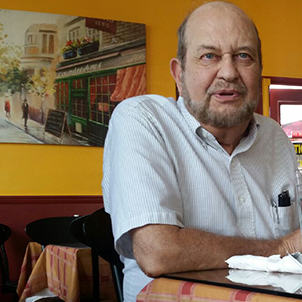Bigger, California has learned through long experience, is not always better. It can be downright destructive, as when a city outgrows its water or freeway system.
Whether bigger can be better, more responsive and cost-effective, arises again this spring, in two proposals that could fundamentally change politics both statewide and in California’s largest county.
One, purveyed in a proposed 2018 initiative, would make the Legislature 100 times bigger than it is today, while cutting its pay and reducing the size of Assembly and Senate districts to 1 percent of their current dimensions.
The other would expand county boards of supervisors from five members to seven where population tops 5 million, which today means only Los Angeles County, which would also get an elected chief executive similar to a mayor.
This one is aimed to improve government in L.A., sponsors saying it would modernize the state’s most powerful local government, where open county board seats can attract sitting members of Congress who already occupy very secure jobs, as when Democratic former San Pedro Rep. Janice Hahn won a seat on the board last year.
The more wide-ranging of these plans comes from John Cox, a San Diego County real estate investor.
He is the only 2018 Republican candidate for governor. As such, he drew 18 percent support in one recent major poll, topping the better-known Democratic likes of former Los Angeles Mayor Antonio Villaraigosa and current state Treasurer John Chiang. He trailed only Lt. Gov. Gavin Newsom, the Democratic former mayor of San Francisco, who scored 28 percent.
Losing Proposition
Mr. Cox’s initiative is a rehash of an idea he floated in 2012 that failed to draw enough petition signatures to make the 2014 ballot. It would essentially divide the current 80 Assembly and 40 state Senate districts by 100, creating neighborhood micro-districts of 5,000 and 10,000 persons each. Every district would get a representative – 12,000 in all.
Recognizing this might be just a tad unwieldy, Mr. Cox would have the 12,000 new legislators elect “working committees” of 80 Assembly members and 40 senators – oddly enough, the exact sizes of today’s two legislative houses.
The working committees would perform most tasks of the current Legislature, but the full bodies of 8,000 in the Assembly and 4,000 for the Senate would vote on all non-urgent matters and proposed laws. Lawmakers’ pay would be cut to $1,000 yearly.
Mr. Cox is convinced this would take most of the big money out of legislative politics, forcing candidates to go door to door in their small districts rather than flooding airwaves and mailboxes with advertising. The actual, working lawmakers on the two active committees would then have just 99 constituents each (other neighborhood legislators) to please and pander to.
Don’t expect this one to go very far once voters realize they wouldn’t even be changing the number of people in the Capitol, but would add a whole new layer of government.
Meanwhile, the county proposal sponsored by Democratic state Sen. Tony Mendoza of Artesia could create the second most powerful political job in California in the Los Angeles County executive, and two other posts also certain to draw big-name candidates and big-money campaigns.
His plan to add two county supervisors to the current five would reduce each Los Angeles County supervisor’s district population to 1.4 million from today’s 2 million.
“By increasing representation and creating a professional management position, we will address multiple issues and actively improve local government,” Mr. Mendoza said.
This one needs a two-thirds vote in both current legislative houses to make the 2020 ballot and become effective in 2022. A similar proposal failed in 2015 after drawing opposition from the then-current Los Angeles County board.
The Mendoza plan also raises the question of whether it’s right for voters in the rest of California to decide the structure of politics in Los Angeles, when it won’t affect anyone but Angelenos.
Either plan would make for major upheaval, something voters historically have not been inclined to approve. But no one can predict the outcome of such a vote in today’s volatile political climate, not when it involves creation of thousands of new political positions for ambitious Californians to occupy.
Mr. Elias is author of the current book “The Burzynski Breakthrough: The Most Promising Cancer Treatment and the Government’s Campaign to Squelch It,” now available in an updated third edition. His email address is tdelias@aol.com

